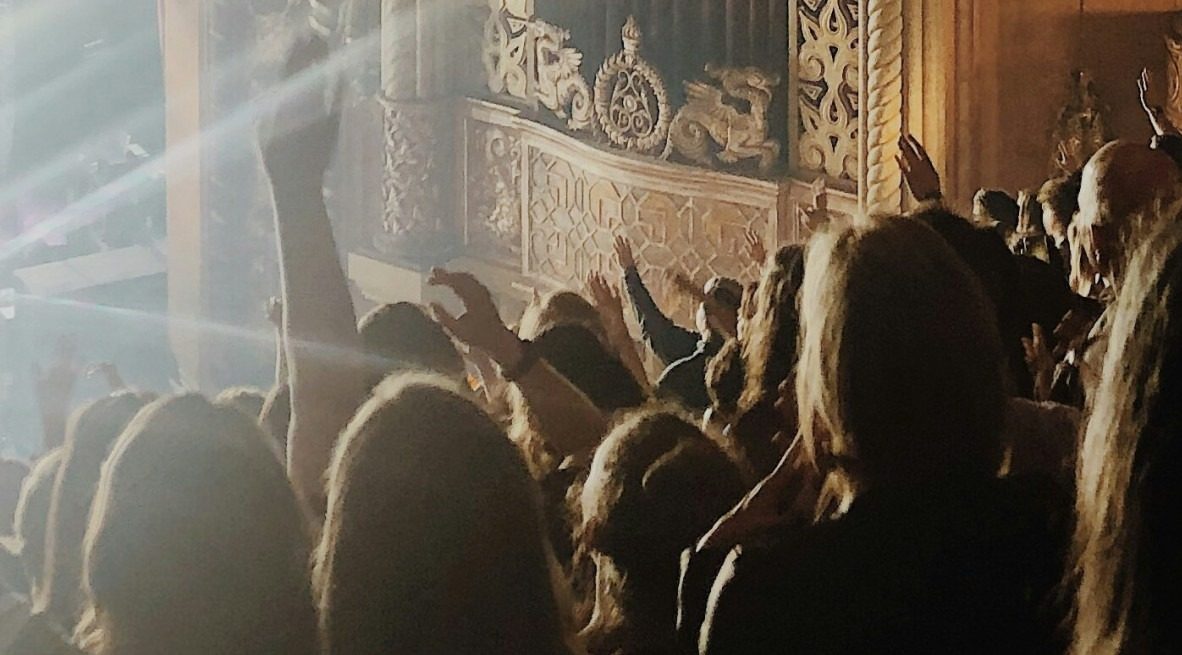Subversion in Sequins – The Pantomime Dame
In Cyprus, Christmas smells like slow-roasted lamb and egg-lemon soup, so when I first moved to Britain and heard that the equivalent to our βασιλόπιττα, the essential ingredient for a complete Greek Christmas, was watching a man in a wig yelling while “He’s behind you!”, I was intrigued. What could make a pantomime, and particularly the extravagant figure of the dame, such a cornerstone of the festive season?
For my fellow Europeans, no, pantomime is not a play without words. In Britain, panto (short for pantomime) is a musical parody that fills theatres from early December to mid-January. It’s part fairy tale, part comedy, and wholly chaotic.
Its whole production challenges the elitism of ‘high culture’ theatre and reclaims performance as participatory and populist.
Panto breaks theatrical convention by destroying the ‘fourth wall’. The audience is encouraged to shout at the stage, sing along, and groan at the innuendo. This blurs the line between performer and spectator and turns a performance from something passive into something communal and messy. It’s often an hour longer than it needs to be, but that’s part of the charm. And at the centre of it all stands the dame: a man in extravagant makeup, a towering wig, and a large dress. Its whole production challenges the elitism of ‘high culture’ theatre and reclaims performance as participatory and populist.
In literature, there’s a term called ‘comic relief’. That’s what the dame is to Britain itself, a burst of colour in a grey and dull winter. Every year, when the cold sets in and the days shorten, she strides onto the stage in sequins, providing a living embodiment of joy.
The origins of the dame reach back to the 16 century and the Italian commedia dell’arte, with its masked clowns, bumbling servants and comic chaos. When these traditions blended with British storytelling, they gave birth to the Christmas panto.
At first, men played the dame out of necessity; women weren’t allowed on the English stage until 1660. Yet even after the law changed, male dames remained. The dame’s humour has come to depend on the audience knowing she is a man in a costume, which allows the performative nature of gender itself to be exposed. Judith Butler’s idea that gender is performed and not innate is essentially what panto has been staging for years.
By the late 19 century, music-hall stars like Dan Leno redefined the dame as a relatable, working-class mother: warm, loud and resilient. Simultaneously, panto slips in references to current events and lets the witty, everyday hero triumph over those in power. This reverses social hierarchies as the loud and ‘improper’ woman dominates the stage while figures of authority are being mocked.
Moreover, in eras where homosexuality was criminalised, panto offered one of the few socially acceptable outlets for gender fluidity and camp, all folded within the conventions of family entertainment. The stage became, and remains, a space where difference is gloriously spotlighted: where the heroine might disguise herself as the principal boy, or, in more recent productions, where a non-binary actor can play a non-binary hero, and people don’t question it.
In a world that often feels too serious, this explosion of absurdity reminds audiences to mock seriousness and find comfort in shared disorder
Every panto follows a familiar moral pattern: good triumphs over evil, love conquers all, and the audience helps save the day. Yet, this is reached through pure chaos. Is that why pantomime feels so inseparable from Christmas – a season that offers reflection and hope? Does its comforting predictability speak to something deeper? Perhaps to our collective longing to believe that kindness can prevail, that even in chaos, we can make a difference simply by joining in?
Even staging has meaning. The villain, usually an embodiment of vanity, greed or cruelty, enters from stage left, traditionally associated with hell in Christian iconography, while heroes and dames enter from stage right, symbolising virtue and heaven. Yet what follows is far from orderly morality. In the infamous ‘Slosh Scene’, the dame usually ends up covered with paint or custard pie. This represents a temporary collapse of order, where rules, authority and dignity are literally washed away. The dame becomes the centre of this carnivalesque chaos, and it’s a ritualised moment where disorder becomes cleansing, and laughter restores harmony. In a world that often feels too serious, this explosion of absurdity reminds audiences to mock seriousness and find comfort in shared disorder.
The Dame is, therefore, a paradox – she is ancient yet modern, ridiculous yet sincere
Marie Kruger describes English panto as a “dynamic tradition”; constantly changing yet rooted in history. It is a cherished annual tradition for families, often as important as the Christmas tree itself, and every generation reinvents it, either by incorporating modern pop-culture jokes or through celebrity cameos, reminding people that tradition can evolve without losing its essence. The dame is, therefore, a paradox – she is ancient yet modern, ridiculous yet sincere.
In Cyprus, Christmas begins in kitchens; in Britain, it begins on stage. One celebrates through food, the other through laughter, yet the purpose is the same: to feel a sense of community. Researching about how the pantomime dame commands the stage, I understood why she endures. Through her, British audiences find a rare sense of unity and acceptance, and that’s profoundly human.

Comments